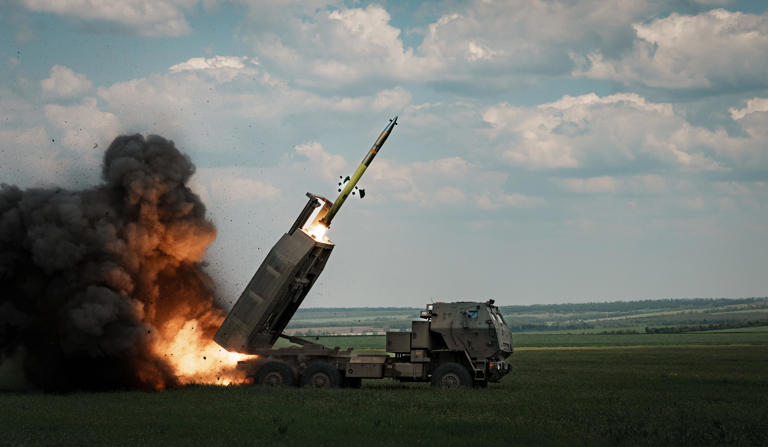Ukraine has successfully destroyed columns of Russian soldiers using US-made High Mobility Artillery Rocket Systems (HIMARS) after receiving permission from its allies to strike military targets across the border into Russia.
Ukraine received the green light last month from its allies to use provided weapons for targeting Russian soil, reversing a previous restriction.
According to a Ukrainian artillery commander with the call sign Hefastus, HIMARS units began their operations in the northern Kharkiv region as soon as the permission was granted. “The HIMARS were not silent for the whole day,” Hefastus stated.
Hefastus reported that Ukrainian forces managed to destroy entire columns of Russian troops poised at the border, waiting to enter Ukraine. These achievements were previously unattainable due to the range limitations of regular ammunition.
The newfound ability to strike Russian command centers and resupply points has significantly slowed Russia’s momentum, particularly in the Kharkiv region. This has enabled Ukrainian troops to mount small tactical counterattacks and reclaim some territory.
Despite the successes, Ukraine still faces considerable pressure. While some Russian attacks have been reduced, air bases from which Russia launches assaults remain out of range of the current permissions.
George Barros, a Russian military expert at the Institute for the Study of War, noted that the ability to use HIMARS against Russian targets has had a “positive difference,” helping to blunt the Russian offensive and slow its advance.
Ukraine’s deputy defense minister, Ivan Havryliuk, highlighted that around 90,000 Russian troops deep within Russian territory were preparing for an assault when the restrictions were lifted.
The strategic use of HIMARS has disrupted these preparations and altered the dynamics of the conflict. Analysts have long described Ukraine’s previous position as akin to fighting with one hand tied behind its back, unable to counter Russia’s use of its own territory for resupplying forces and launching attacks.
The recent policy changes from Ukraine’s allies, particularly the US’s announcement on May 30, have changed this scenario, allowing Ukraine to mount a more robust defense and counteroffensive.
As Ukraine continues to leverage its new capabilities, the situation on the ground remains fluid, with Ukrainian forces striving to maintain their defensive gains and push back against Russian advances.
The international community watches closely, with the potential for further shifts in the conflict’s dynamics as Ukraine maximizes its use of Western-supplied weapons.
The destruction of Russian troop columns by Ukrainian HIMARS units marks a critical juncture in the conflict, demonstrating the significant impact of allied support and strategic permissions.



